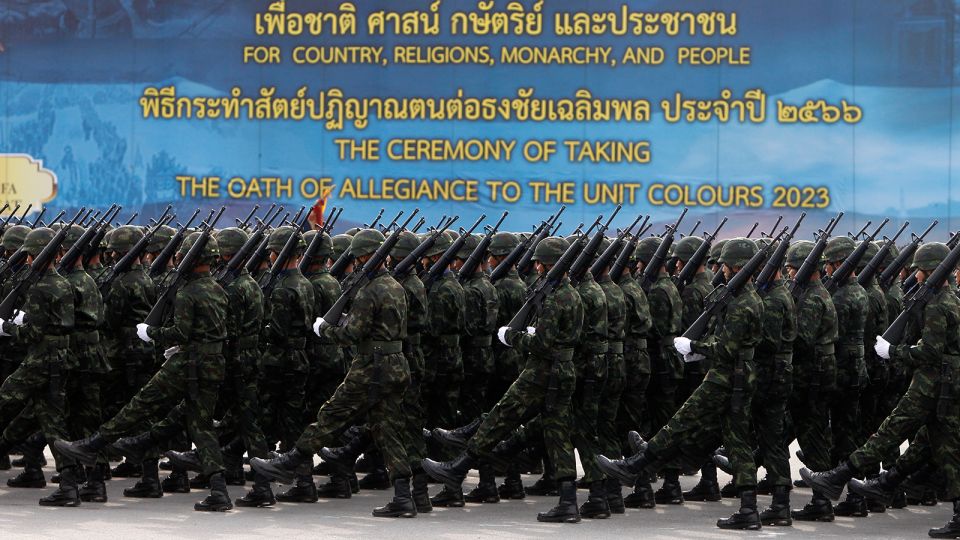Thai-Cambodian Rivalry: Strong US Ally vs. China-Tied Underdog

Leaders of Cambodia and Thailand Agree to Negotiate Ceasefire
Recent developments have seen the leaders of Cambodia and Thailand agree to meet in an effort to negotiate a ceasefire. This decision was announced through a social media post by former United States President Donald Trump, who claimed to have spoken with both the Prime Minister of Cambodia and the acting Prime Minister of Thailand. According to Trump, both nations have agreed to meet immediately to work toward a ceasefire and ultimately achieve peace.
The announcement came amid escalating violence along the disputed border between Thailand and Cambodia. The conflict has reignited tensions over territory that has been contested since colonial power France established the boundary more than a century ago. Thailand, a longtime U.S. ally, is pitted against Cambodia, which has closer ties to China. The renewed clashes have resulted in more than a dozen deaths, dozens of injuries, and the evacuation of over 150,000 civilians. Fighting has continued into the weekend, according to officials on both sides.
Military Disparities Between the Two Nations
Thailand's military significantly outnumbers and outguns Cambodia’s forces. With 361,000 active-duty personnel across all branches, Thailand’s military is three times larger than Cambodia’s. Additionally, Thai troops are equipped with advanced weaponry that their Cambodian counterparts lack.
According to the International Institute for Strategic Studies (IISS), Thailand’s air force is one of the best-equipped and trained in Southeast Asia. A 2024 ranking by the Lowy Institute placed Thailand at 14th in regional military capabilities, while Cambodia ranked 23rd. This disparity can be attributed to Thailand’s larger population and significantly higher GDP, as well as its historical avoidance of the wars that affected much of the region in the 20th century.
In terms of overall influence, Thailand ranks 10th in the Lowy Asia Power Index, considered a middle power. Cambodia, on the other hand, is categorized as a minor power, grouped with countries like Bangladesh, Sri Lanka, and Laos.
Strong U.S.-Thailand Ties
Thailand has long maintained strong ties with the United States. As a treaty ally since the signing of the Southeast Asia Collective Defense Treaty in 1954, Thailand has enjoyed significant military and economic support from Washington. During the Vietnam War, Thai forces fought alongside U.S.-backed South Vietnam, and the country continues to host U.S. military assets through exercises such as Cobra Gold, the longest-running international military exercise in the world.
Despite these longstanding relations, Thailand has sought to diversify its defense partnerships in recent years, developing a domestic weapons industry with assistance from countries like Israel, Italy, Russia, South Korea, and Sweden.
Cambodia’s Growing Ties with China
Cambodia’s military, established in 1993, relies heavily on China for defense equipment and support. Beijing has even developed a naval base in Cambodia, known as Ream Naval Base, which could potentially host Chinese aircraft carriers. The two nations regularly conduct joint military exercises, including the annual Golden Dragon drills, which feature live-fire training scenarios.
Chinese officials have emphasized the “iron-clad” friendship between the two countries, stating that their militaries share unbreakable relations. However, Cambodia’s military lacks the capacity to design and manufacture modern equipment, relying instead on foreign suppliers.
Weaponry and Capabilities
Thailand’s military is well-equipped, with a fleet of modern fighter jets, including Swedish Gripen fighters and older U.S.-made F-16s and F-5s. It also possesses a large number of tanks, artillery pieces, and attack helicopters. In contrast, Cambodia’s military lacks a combat-capable air force and relies on older Soviet and Chinese equipment.
On the ground, Thailand has dozens of battle tanks, including modern Chinese-made VT-4 tanks, and hundreds of older U.S.-made tanks. Cambodia, meanwhile, has around 200 old Chinese- and Soviet-made tanks. In terms of artillery, Thailand has over 600 pieces, including powerful 155mm weapons, while Cambodia has only a dozen 155mm guns and 400 smaller towed artillery pieces.
What Comes Next?
Military analysts suggest that while Thailand holds a clear advantage in numbers and quality, Cambodia may have an edge in terrain access along the disputed border. With reports of landmines and booby traps laid by Cambodian forces, Thailand is likely to rely on air power and long-range firepower in the conflict.
Hawaii-based analyst Carl Schuster noted that Thailand’s Royal Thai Air Force and special forces are superior, and he expects the country to emphasize air power and long-range weaponry in the ongoing conflict.
Post a Comment for "Thai-Cambodian Rivalry: Strong US Ally vs. China-Tied Underdog"
Post a Comment